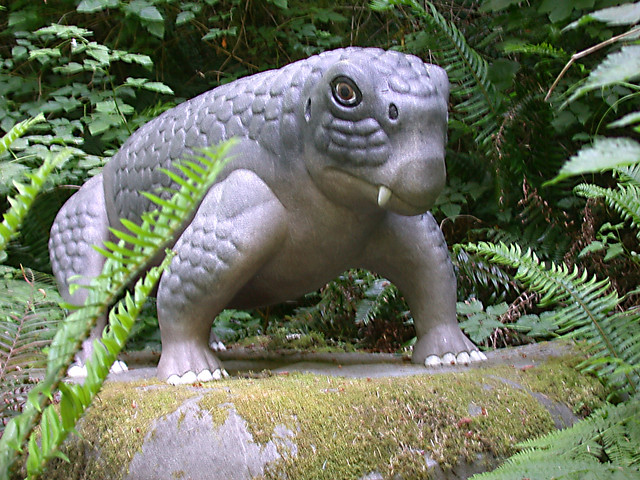09 January 2012
Fossil Vertebrate of the Month - Lystrosaurus
One hundred years ago this month - on January 6th, 1912 - Alfred Wegener presented his idea that the continents had once all been joined (in a supercontinent he termed Pangaea) and were slowly floating apart as part of a process he called continental drift. His hypothesis was largely derided at the time, but would eventually evolve into plate tectonics, which is now the unifying theory of geology. Numerous lines of evidence were brought together to establish the validity of plate tectonics, but among the most convincing was the presence of remarkably similar fossils on distant continents. Perhaps the most famous of these organisms was the Permo-Triassic dicynodont Lystrosaurus. First described from South Africa, the discovery of Lystrosaurus fossils in Antarctica in the 1960s showed beyond a reasonable doubt that the two continents must have been joined (it has subsequently been uncovered in India, East Asia, and Europe, driving home the reality of plate tectonics even further). Besides its utility as a biogeographic marker, Lystrosaurus is remarkable for being one of the few survivors of the Permian-Triassic Extinction, which, by some estimates, wiped out over 90% of life on Earth. Why it was able to survive this cataclysm and to prosper in its aftermath is something of a mystery, as in many ways Lystrosaurus is a very unimpressive animal (they are often referred to as the pigs of the Triassic). In fact, my original dissertation project (before I was romanced by its distant mammalian relatives) was to be a test of the hypothesis that Lystrosaurus, as a burrowing animal, was adapted to the low-oxygen conditions that may have characterized the Early Triassic. In another Oregon-related note, the picture above is of a model from Prehistoric Gardens, south of Coos Bay, one of the more atmospheric and well-preserved "dinosaur parks" in the world.
Subscribe to:
Post Comments (Atom)

No comments:
Post a Comment